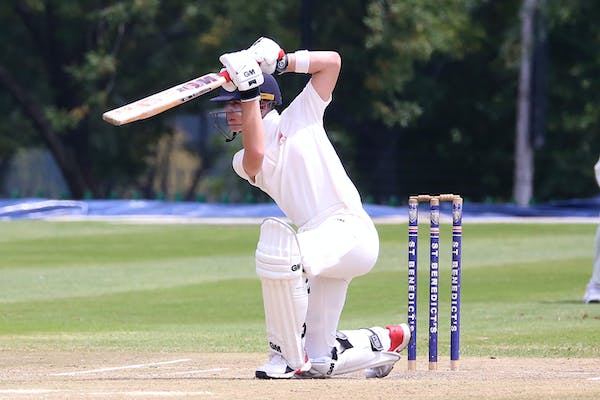Cricket has transformed from a gentleman’s game to a high-octane thrill ride. Explore how the three formats of cricket: Test, ODI, and T20 have shaped the game we love.
What are the different types of forms?
There are presently three distinct international formats: test cricket, one-day internationals, and T20 internationals. Each has its own fanbase, but many consider the test to be the pinnacle of the game.
First-class replaces tests in the domestic game, however one-day games and T20 matches follow the same structure as the international game. Domestic organisers in English have recently come up with a new format of the game called the Hundred, which operates in a completely different way, as we will see momentarily.
Test Matches
Test is a type of first-class cricket played at an international level between teams representing complete International Cricket Council (ICC) member countries. A match is made up of four innings (two per team) and can last up to five days. Previously, certain Test matches had no time restriction and were referred to as Timeless Tests. The phrase “test match” was first used in 1861-62, albeit in a different meaning.
How do countries earn the right to compete in Test matches?
The International Cricket Council bestows the designation of test-playing nation to a country. The ICC bases its decision on the applicant nation’s performance in matches against other Associate Members of the ICC and against Test Match countries, as well as the quality of cricket organisation and the availability of development programmes for the sport.

One Day International (ODI)
A One Day International (ODI) is a type of limited overs cricket game played between two international teams in which each team confronts a defined amount of overs, presently 50, and the game can run up to 9 hours. This format is used for the Cricket World Cup, which is contested every four years. One Day International (ODI) matches are sometimes known as Limited Overs Internationals (LOI), while this word can also apply to Twenty20 International (T20I) matches. They are big matches that represent the pinnacle of List A, limited-overs play.
Matches are the number of matches played in the 12-24 months since May of the previous year, plus half of the amount played in the 24 months before that.
The international one-day game emerged in the late twentieth century.
Rules
- An ODI is played between two teams of 11 players apiece.
- The captain of the winning team chooses whether to bat or bowl (field) first.
- The side that bats first determines the goal score in a single inning. The innings continues until either the batting side is “all out” (ten of the eleven batting players are “out”) or all of the first side’s allocated overs are finished.
- Each bowler is limited to a maximum of 10 overs (fewer in rain-shortened matches and, in any case, no more than one fifth or 20% of the total overs every innings). As a result, each team must have at least five good bowlers (either specialised bowlers or all-rounders).
- To win the match, the side batting second attempts to score more than the target score. Similarly, in order to win, the side bowling second aims to bowl out the second team or force them to exhaust their overs before reaching the goal score.
- If both teams score the same amount of runs when the second team loses all of its wickets or runs out of overs, the game is called a draw (regardless of the number of wickets lost by either side).
T-20 Cricket
Twenty20 (T20) cricket is a shorter game format. The England and Wales Cricket Board (ECB) implemented it at the professional level in 2003 for inter-county competition.In a Twenty20 game, each team has one innings, which is limited to a maximum of twenty overs. Twenty20 cricket is one of three contemporary forms of cricket acknowledged by the International Cricket Council (ICC) as being at the highest international or domestic level, along with first-class and List A cricket.
A normal Twenty20 match lasts roughly two and a half hours, with each innings lasting about 70 minutes and an official 10-minute break in between. This version of the game is substantially shorter than earlier versions, and it corresponds to the length of other popular team sports. It was designed to produce a fast-paced game that would appeal to both fans on the ground and television viewers.
The game has expanded throughout the cricket globe. Most international tours include at least one Twenty20 match, and all Test-playing countries compete in a domestic cup competition.
Rules
- Each bowler is limited to one-fifth of the total overs every innings. This is four overs for a full, unbroken match.
- If a bowler oversteps the crease and bowls a no-ball, it costs one or two runs (depending on the tournament), and their following delivery is marked as a “free-hit.” The hitter may only be removed in this situation by running out, striking the ball twice, or blocking the field.
- Fielding limits include the following:
- At any given moment, no more than five fielders may be present on the leg side.
- A maximum of two fielders may be outside the 30-yard circle during the opening six overs (this is known as the powerplay).
- A maximum of five fielders may be outside the fielding circle after the first six overs.
- If the fielding team does not begin bowling their 20th over within 75 minutes, the batting side is awarded six runs for each entire over bowled beyond the 75-minute mark; the umpire may add further time if they consider the batting team is wasting time.
Conclusion
Cricket is one of the most popular sports in the world, and its popularity has increased rapidly over the last two decades. To understand how cricket is played, it is important to understand the different types of forms. These forms are based on the type of being played and their time allotment.
Test and One-Day International (ODI) are the best known types of cricket; with T20 the most recent development, the forms of all evolved towards a more condensed game and more popular across the globe. All forms exist at the international level, and any one of these can be referred to as international cricket. Each form is dependent upon the other forms, and it is not possible to effectively compare them simply on the basis of time allotment. The most significant factor that determines how well a team plays is the strength of their players.

